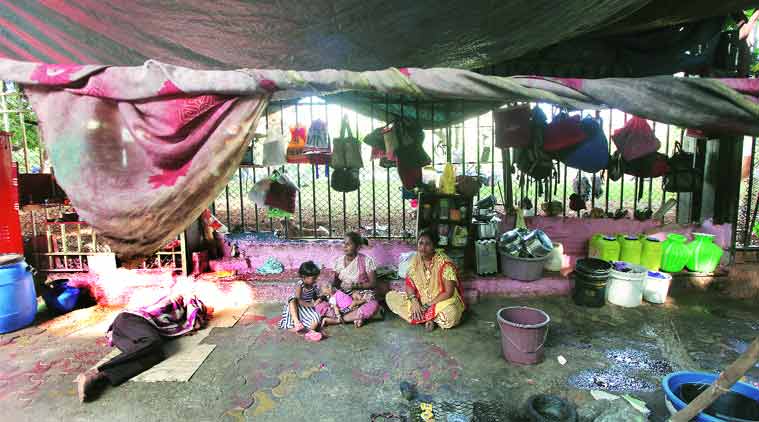The question was considered by Supreme court in Olga tellis case. This case originated when Bombay municipality went to slum and pavement dwellings to remove slums, the dwellers approached the Bombay high court and high court gave interim relief, despite the interim relief, the dwellings were removed and dwellers forcibly deported to their home towns.
Against this the dwellers approached Supreme court with the help of journalist and social activists and one of the journalist was Olga tellis.
Read the entire backstory of this case, here
In this case, the petitioners also challenged the section 314 of the Bombay municipal corporation act, which provides to remove the encroachment on the pavement without any notice if commissioner decides so.
But the court upheld the legality of the section as that section was just enabling provision and not mandatory provision, that only give the commission to discretion to remove the structure on the pavements.
The court said that the procedure prescribed by Section 314 of the Bombay Municipal Corporation Act for removal of encroachments on the footpaths or pavements over which the public has the right of passage or access, cannot be regarded as unreasonable, unfair or unjust.
There is no static measure of reasonableness which can be applied to all situations alike. Indeed, the question “is this procedure reasonable implies and postulates the inquiry as to whether the procedure prescribed is reasonable in the circumstances of the case, In Francis Coralie Mullin, [1981] 2 S.C.R. 516, Bhagwati., Said:
“… … it is for the Court to decide in exercise of its constitutional power of judicial review whether the deprivation of life or personal liberty in a given case is by procedure, which is reasonable, fair and just or it is otherwise.”
Is there any right to live on pavements or footpaths?
The court had the opinion that, in the first place, footpaths or pavements are public properties which are intended to serve the convenience of the general public. They are not laid for private use and indeed, their use for a private purpose frustrates the very object for which they are carved out from portions of public streets.
The main reason for laying out pavements is to ensure that the pedestrians are able to go about their daily affairs with a reasonable measure of safety and security. That facility, which has matured into a right of the pedestrians, cannot be set at naught by allowing encroachments to be made on the pavements.
No one has the right to make use of a public property for a private purpose without the requisite authorisation and, therefore, it is erroneous to contend that the pavement dwellers have the right to encroach upon pavement by constructing dwellings thereon. Public streets, of which pavements form a part, are primarily dedicated for the purpose of passage and, even the pedestrians have but the limited right of using pavements for the purpose of passing and repassing.
So long as a person does not transgress the limited purpose for which pavements are made, his use thereof is legitimate and lawful. But, if a person puts any public property to a use for which it is not intended and is not intended and is not authorised so to use it, he becomes a trespasser.
The common example which is cited in some of the English cases (see, for example, Hickman v. Maisey, [1900] 1 Q.B. 752, is that if a person, while using a highway for passage, sits down for a time to rest himself by the side of the road, he does not commit a trespass. But, if a person puts up a dwelling on the pavement, whatever may be the economic compulsions behind such an act, his user of the pavement would become unauthorised.
Pavement dwelling and public nuisance
The existence of dwellings on the pavements is unquestionably a source of nuisance to the public, at least for the reason that they are denied the use of pavements for passing and repassing. They are compelled, by reason of the occupation of pavements by dwellers, to use highways and public streets as passages. The affidavit filed on behalf of the Corporation shows that the fall-out of pedestrians in large numbers on highways and streets constitutes a grave traffic hazard. Surely, pedestrians deserve consideration in the matter of their physical safety, which cannot be sacrificed in order to accommodate persons who use public properties for a private purpose, unauthorizedly.
Since it is not possible to provide any public conveniences to the pavement dwellers on or near the pavements, they answer the nature’s call on the pavements or on the streets adjoining them. These facts provide the background to the provision for removal of encroachments on pavements and footpaths.
Therefore, the encroachment on pavement is illegal and unjustified. No person has the right to encroach, by erecting a structure or otherwise, on footpaths, pavements or any other place reserved or ear-marked for a public purpose like, for example, a garden or a playground.
Reference
Olga Tellis & Ors vs Bombay Municipal Corporation; 1986 AIR 180, 1985 SCR Supl. (2) 5
